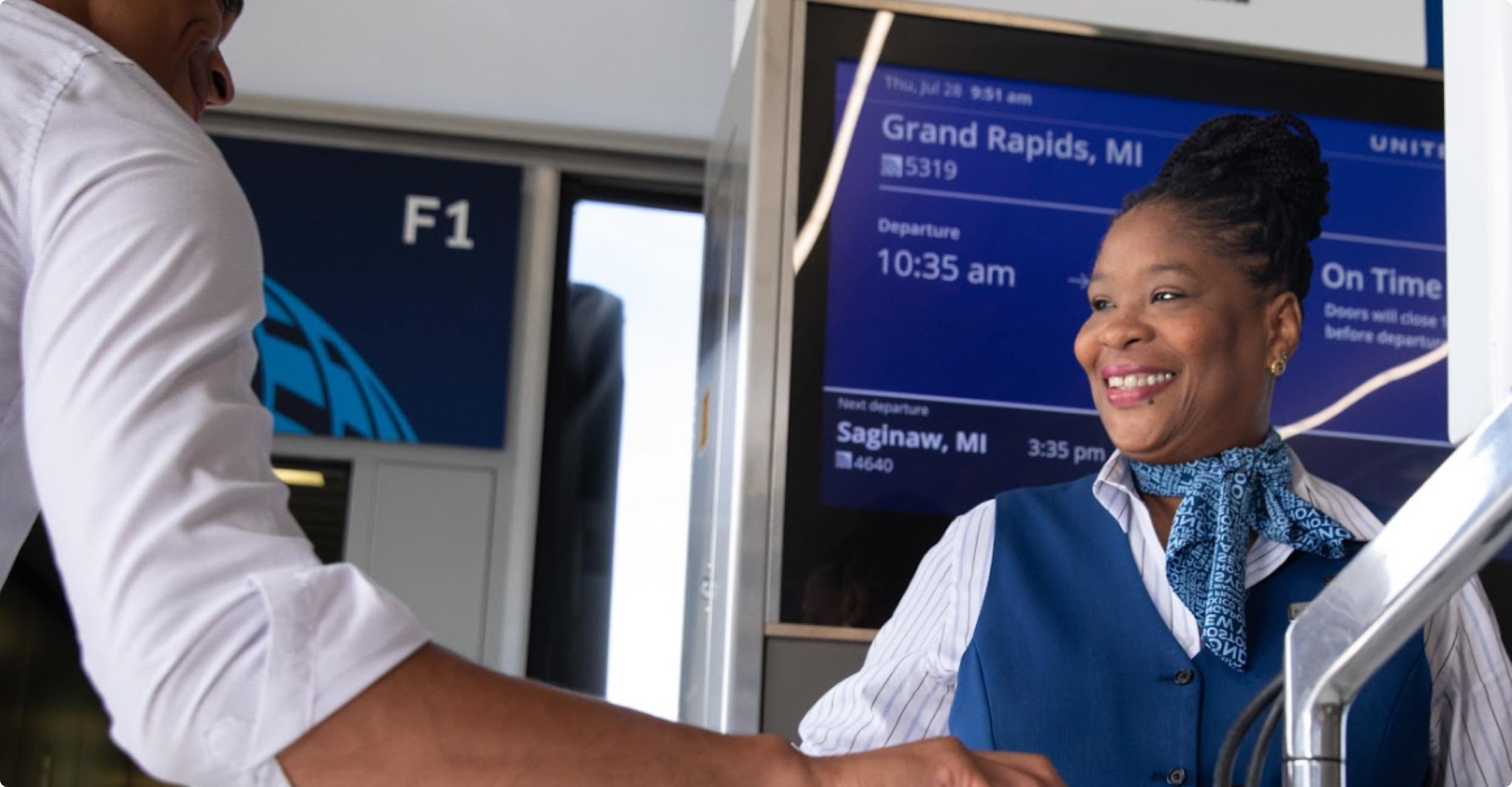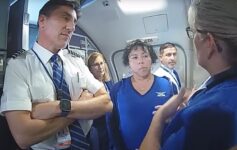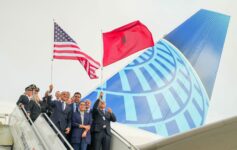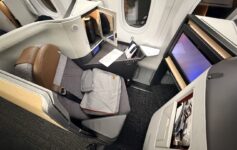
It may strike many as common sense, but training new hires in a thoughtful way with helpful feedback and the ability to ask questions is a great way to create and retain great employees. United Airlines is seeing the fruit of such efforts in its “Accelerate” training program.
United Airlines Has Hired Over 11,000 New People So Far In 2023
United has added over 11,000 new employees this year and expects to add a total of 15,000 by the end of the year. Breaking it down among departments, that includes:
- 700+ pilots
- 1,100+ flight attendants
- 700+ maintenance technicians
- including aircraft technicians, ground service technicians, and facilities technicians
- 900+ customer service and ramp service employees
- 100+ new contact center team members
- 700+ corporate support team members
- lawyers, marketers and communicators, accountants, technologists, etc
United is also promoting internally and has transferred over 450 rampers from Guam to Denver.
United Airlines “Accelerate” Program Is Creating Better Employees
That’s all fine and good, but what really caught my attention was a new initiative United has called “Accelerate” that seeks to offer better training new hires. Let’s take a look at that concept:
- New hires are assigned to a team of 4-5 new hires and together work a dedicated zone of gates with trainers and mentors for four weeks
- The Accelerate program has been in effect at every United hub airport as well in Orlando (MCO) and San Diego (SAN)
- Gates staffed by the Accelerate teams are some of the “best-performing gates” in the entire airport, meaning:
- Improved efficiency and profitability
- Less incidents and injuries on the tarmac
- higher Net Promoter Scores (NPS)
- Accelerate has shown a direct correlation to first year retention rates
- For example, in Denver United’s current retention rate is at 73% for both ramp and customer service employees compared to 57% the previous 12 months
I think that last point is huge. And while I’ve worked for myself for over a decade now, my wife (a nurse) dealt with a very poor training model at her hospital. You do not set up employees for success when you do not train them how to do the little things right, allow them to ask questions, and even make mistakes in a controlled and congenial environment. This is what creates loyal and talented employees.
> Read More: Thousands Line Up For Jobs At United Airlines
> Read More: As United Airlines Goes On Hiring Spree, Should It Recall International Flight Attendants?
CONCLUSION
New job applications are up 56% over the last year at United Airlines, but much more importantly, retention is up and United is conscientiously thinking about how it trains employees through its Accelerate program.
It is this sort of training that should be fundamental to all customer-facing roles at the airline (and every airline…).
image: United Airlines




Unless there are some creative maths at play, the 57% retention rate implies a 43% turnover, which is absolutely huge. Even 27% seems very high, one would hope that they would be trying to keep people for an average of more than 3 years.
This is a 24/7 operation that hires a lot of part-timers (especially for customer service and ramp jobs). So, these jobs aren’t for everyone — such as the seniority-based shift scheduling for 24-hour coverage or the physical, all-weather work on the ramp.
The majority of my ramp class had zero airline/airport work experience. (We had recent high school graduates and some with 30 years of high tech office experience.) So, two people decided within the first two weeks that the physicality and industrial nature of ramp services wasn’t for them. That was a 12% attrition rate before we were out of the classroom phase of training.
Just over a year later, 11 of my classmates (out of 17 starters) are still here — a 64% retention rate. The reasons for others leaving varied from family emergency to opting for college. All six left within the first 2-3 months.
I think a more interesting (and telling) retention number would be: of those who successfully complete the probationary period, how many are still here after 1 year (or 3 years) of total service? For my class, that retention rate would be 100% for the one-year mark. Stay tuned (in 2 years) for the 3-year rate.
The drug test must swat them like flies.
30 years ago, at the beginning of “Super Saver Fares” and frequent flier programs, UA also went on a hiring spree.
They hired so many people, so quickly, HR couldn’t get all the background checks done before the new hires’ report date. This led to new hires being fired when, oh, my goodness, they lied about their criminal record or drug use.
Read this again:
Just over a quarter of new hires don’t last a year and that is, supposedly “good news.”
And of that 1st year, depending on the job, training is about 2 months.
To say “things are great” is utter nonsense. Are they talking about retention on a rolling 12 months, July to July?
Or this calendar year?
How many of those new hires have been out of training and on the job over last Thanksgiving, Christmas, and New Years.
I can’t wait to hear the tales of 450 rampers working a winter in DEN.
Most importantly, where are the qualified trainers coming from to train all these people?
This is all just p.r. nonsense. Having been intimately involved in the process for a few decades, and can tell you it is utter chaos.
Thousands of late Millenials and, God forbid Gen Z’s, will have no clue about entering a world where you can’t be a minute late to start work, a minute late coming back for lunch, and have to get the plane out to the minute as to what it is scheduled or someone is going to ask why.
Some of the turn over is related to the pay scales. Is the rush to the airport at 5 am or leaving at 9 pm worth the headache? Also, only part-time status (no benefits) offered considering the minimal service at your location. Then dealing with drunk, arrogant, angry passengers because a flight is delayed 20 minutes while the CEO flys home on a private jet in the middle of a holiday meltdown.
Unless they find a bunch of retirees looking for pocket money by working a gate for 4 to 5 hours a day, I don’t hold out much hope.
UA employees all get the same benefits wheter they are are full or part time, thanks to the various unions.
Virtually all the public contact and “below the wing” employees work at the hubs and a handful of “legacy stations” like SEA and PHL, totalling maybe a dozen stations, tops.
Virtually all the employees and the 100-odd other stations work for either UGE, United Ground Express or they work for Skywest. Those are the places where it gets hard with split shifts and seasonal hour cutbacks.
UGE employees are part of the same union, the IAM, as the mainline customer contract people, and have their own contract, but it’s less generous than the mainline one.
Rush to the airport at 0500?
You wish. When the first flight if the day is at 0600, the counter opens around 0430. People in the large stations start at 0330 to handle the crush that comes all at once when 2,3, 4 flights all leave within a 30 minute window first thing.
There is rarely a pool of part timers wanting to get full time. It’s usually the other way around. With all the part time shifts at the hub stations, there’s almost always a shift that someone is looking for and a lot of part timers want to stay that way for child care . A common occurance is that someone is full time, has a kid, and then wants to go part time. Working for an airline, if you can handle all the unique challenges, is one of the best part time jobs there is.
When there is bad weather or a holiday or something extraodinary and part timers are forced to work more, you can hear the screaming from one end of the system to the other.
I would certainly hope the CEO would fly not home, as Kirby did when he flew to Denver, rather than his home in Chicago, but to do whatever it took to go wherever he needed to, to solve the problem.
Waiting to get on a scheduled flight that wasn’t full when he could get a charter from an airport not so impacted by the problems at EWR would have been stupid and grossly irresponsible both to the customers and to the employees.
Must be some kind of internal definition of ACCELERATE because I don’t get it, as I’m reading.
I would assume, they might also hire externally and contracts out employees, like the the medical profession does, since I was on a flight once with the pilot having a New Zealand (or Australian) accent.